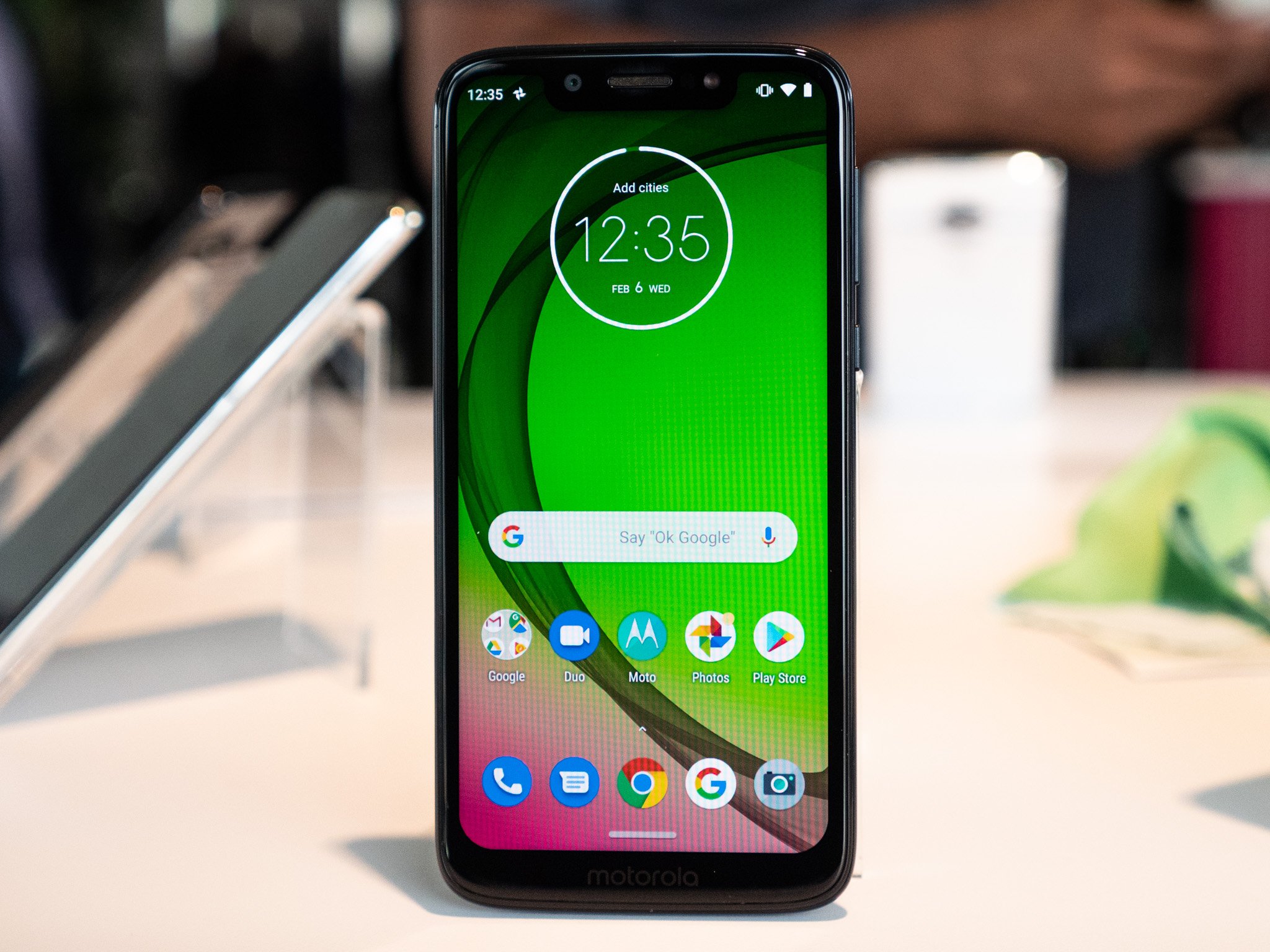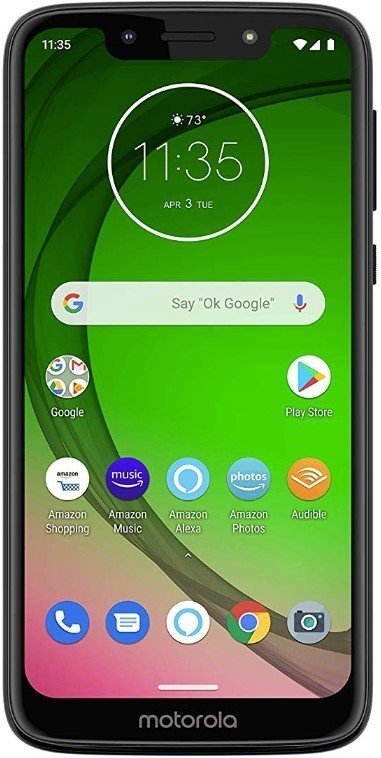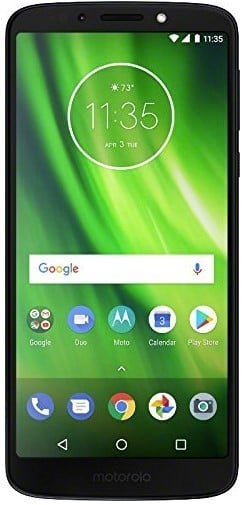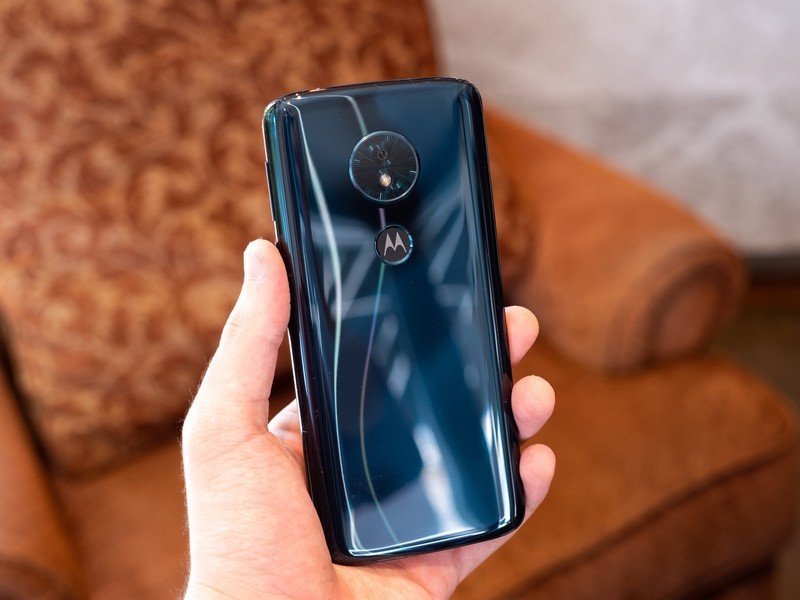Moto G7 Play vs. Moto G6 Play: Should you upgrade?

Moto G7 Play

The most affordable option in the Moto G7 series has plenty to offer, thanks to a robust Snapdragon 632 chipset and USB-C charging. The Moto G7 Play has a more modern design, a better camera up front, and is significantly faster than its predecessor.
Moto G7 Play
Reasons to buy
Reasons to avoid
Moto G6 Play

The Moto G6 Play is starting to show its age. The Snapdragon 427 chipset isn't able to deliver a lag-free experience, and while the massive 4000mAh battery lasts for two days, you're better off picking up the Moto G7 Play for a less frustrating overall experience.
Moto G6 Play
Reasons to buy
Reasons to avoid
Traditionally, devices in the Moto G Play series have featured similar designs as their counterparts in the Moto G series, with minor differences in specs. That's changed this year, as Motorola is offering the same Snapdragon 632 chipset as standard across the Moto G7 range. What that means is that the Moto G7 Play delivers even better value than previous years.
Moto G7 Play dials things up a notch
The first thing you notice when comparing the Moto G7 Play to the previous generation G6 Play is the design. Motorola added a cutout notch to the top of the display to shrink the bezels, and the result is that the Moto G7 Play is 7mm shorter than the G6 Play while still featuring the same 5.7-inch panel. That makes a lot of difference in one-handed usage, and the phone also looks cleaner with the thinner bezels.
The Moto G7 Play has much better specs and more modern design.
The Motorola logo is still prominently highlighted at the bottom, but you get much more screen real estate in a shorter chassis. Aside from the changes up front, the overall aesthetic is similar to the G6 Play — the fingerprint sensor is located inside the Batwing logo, the camera housing has a single 13MP sensor, there's an 8MP shooter upfront, and you get a microSD slot on both phones.
Where the Moto G7 Play truly shines is the internal hardware. The Moto G6 Play had underwhelming specs in the form of a Snapdragon 427, and Motorola has remedied the situation by including a Snapdragon 632 in the G7 Play. The beefier hardware makes it a delight to use the phone, and you won't notice any slowdowns in day-to-day usage.
| Category | Moto G7 Play | Moto G6 Play |
|---|---|---|
| Operating system | Android 9.0 Pie | Android 8.0 Oreo |
| Display | 5.7-inch IPS LCD1512x720 (19:9)Gorilla Glass 3 | 5.7-inch IPS LCD1440x720 (19:9)Gorilla Glass 3 |
| Chipset | Snapdragon 6324 x 1.8GHZ Kryo 250 Gold4 x 1.8GHz Kryo 250 SilverAdreno 506 | Snapdragon 4274 x 1.4GHZ Cortex A53Adreno 308 |
| RAM | 2GB | 3GB |
| Storage | 32GB | 32GB |
| MicroSD slot | Yes (up to 512GB)Dedicated slot | Yes (up to 256GB)Dedicated slot |
| Rear camera | 13MP f/2.0 1.12um PDAF | 13MP f/2.0 1.12um PDAF |
| Front camera | 8MP f/2.2 | 5MP f/2.2 |
| Connectivity | Wi-Fi 802.11 b/g/nBluetooth 4.2 LEGPSFM radio | Wi-Fi 802.11 a/b/g/nBluetooth 4.2 LEGPSFM radio |
| Audio | 3.5mm jackSingle speaker | 3.5mm jackSingle speaker |
| Battery | 3000mAhNon-removable | 4000mAhNon-removable |
| Charging | USB-C10W | Micro-USB10W |
| Water resistance | No rating | No rating |
| Security | Fingerprint sensor | Fingerprint sensor |
| Dimensions | 147.3 x 71.5 x 8 mm149g | 154.4 x 72.2 x 9 mm175g |
| Colors | Deep indigo, Fine Gold, Starry Black | Deep Indigo, Silver, Gold |
That said, the Moto G7 Play comes with 2GB of RAM and 32GB of storage as standard, whereas its predecessor launched with 3GB/32GB. The decrease in RAM isn't a deal-breaker, as the platform itself is much more robust, but it will create a bottleneck if you're using multiple apps simultaneously.
Be an expert in 5 minutes
Get the latest news from Android Central, your trusted companion in the world of Android
The rest of the hardware is identical; you get the same 720p panel, and the 13MP camera at the back is also unchanged. There's now an 8MP camera at the front as standard, and it's marginally better than the 5MP shooter on the G6 Play.
Motorola's software hasn't changed much since the Moto G6 Play, either, and it's still one of the best third-party skins around. With the G6 Play having recently been updated to Android 9 Pie, the software experience is nearly identical across devices — though unfortunately, Motorola's poor track record when it comes to updates doesn't fill us with confidence for future Android iterations.
The Moto G6 Play has much better battery life

The one thing the Moto G6 Play has in its favor is battery life. With a 4000mAh battery under the hood, the phone manages to deliver over two days' worth of use consistently.
With the G6 Play, you get two days' usage consistently.
The G7 Play also does pretty well with its 3000mah unit, but the G6 Play has it beat in this regard. Then there's the fact that the phone has the same 13MP camera at the back as the G7 Play, which means you'll get the same quality of images as Motorola's latest.
The design at the back also hasn't changed from last year's model, making the G6 Play look just as premium as its successor.
It's time to upgrade
The Moto G7 Play is an obvious choice if you're rocking the Moto G6 Play. You're going to lose out on a little bit of battery life, but the overall experience is so much better. The upgraded hardware in the form of the Snapdragon 632 chipset delivers a much-needed boost in performance, and that alone justifies the switch.
The new design also makes it easier to use the Moto G7 Play one-handed, and while it's not exactly a small phone, it is much better in this regard than the G7 Play. Motorola hasn't changed the formula much this year, but the upgrades to the hardware make the Moto G7 Play a no-brainer.

Robust features at a great price point.
The Moto G7 Play is one of the best phones around when it comes to value, and the fact that it has the same Snapdragon 632 chipset as the pricier Moto G7 makes it an even more enticing option. The beefier hardware combined with the new design makes it an obvious upgrade if you're using the G6 Play.

Great battery life, underwhelming hardware.
The Moto G6 Play had its moments, but it's time to find a better alternative. The phone still delivers excellent battery life, but the underpowered hardware means you're not going to have a good time using the phone for any extended duration of time. With the G7 Play priced so affordably, it's time to switch.

Harish Jonnalagadda is Android Central's Senior Editor overseeing mobile coverage. In his current role, he leads the site's coverage of Chinese phone brands, networking products, and AV gear. He has been testing phones for over a decade, and has extensive experience in mobile hardware and the global semiconductor industry. Contact him on Twitter at @chunkynerd.
